
Background
ETIP Ocean has launched in June 2020 a new Strategic Research & Innovation Agenda (SRIA) for ocean energy.
The SRIA outlines the priority research, development and innovation challenges that must be focused upon in the years ahead to deliver the greatest cost reductions for ocean energy. The SRIA is a reference document for the whole ocean energy sector and specifically for public funding organisations (EC, Member States and Regional Agencies) with the aim of inspiring future Research & Innovation calls.
This document is the result of a sector-wide consultation and contribution of the ETIP Ocean Steering Committee and Technology Working Group, in which WEAMEC participates. The new SRIA includes a significant number of similarities with the Research and Innovation Roadmap of WEAMEC.
ETIP Ocean will hold a number of webinars in cooperation with EERA Ocean Energy JP to exchange on the new SRIA and get the sector prepared for future funding calls. Future events and past webinar recordings are available on the ETIP Ocean Events page.
6 Challenges Areas for R&I investment in the coming years
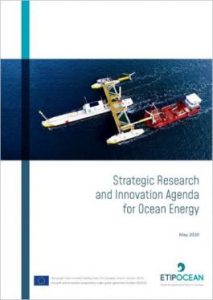
The new SRIA presents six ‘Challenge Areas’, a set of Research and Innovation (R&I) fields identified as the most worthy of investment during the next period of 4-5 years to allow ocean energy to meet its SET Plan targets (10 ct€/kWh for tidal by 2030, for wave by 2035).
The Challenge Areas have been identified starting from the previous Strategic Research Agenda produced in November 2016. They have been updated taking into account the progress of the sector over the last years and in consultation with the ETIP Ocean Technology Working Group.
The six Challenges Areas are:
- Design and Validation of Ocean Energy Devices, presented as the most urgent and crucial area to focus on in order to bring ocean energy to a level where private investment can gradually replace public supports.
- Foundations, Connections and Mooring,
- Logistics and Marine Operations,
- Integration in the Energy System,
- Data Collection, Analysis and Modelling Tools,
- Cross-cutting challenges, intended to address the potential environmental and socio-economic benefits of ocean energy in the future energy mix.
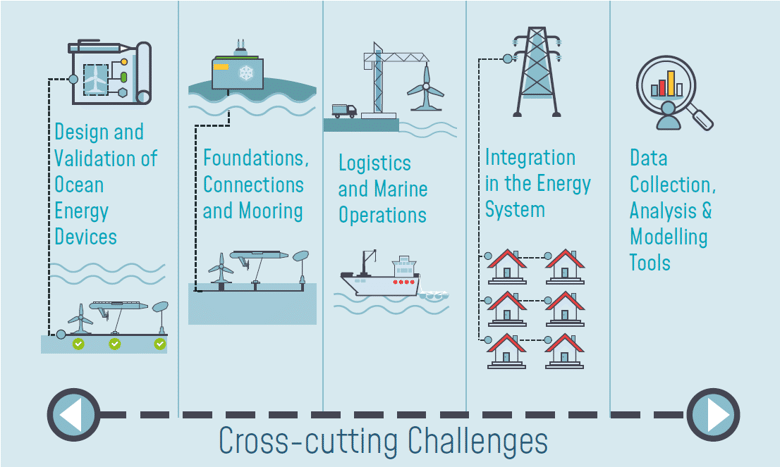
Challenge Areas of Ocean Energy, Source: SRIA 2020, ETIP Ocean
Priority Topics describing the suggested actions
For each Challenge Area, a number of ‘Priority Topics’ are presented, identifying what the ocean energy sector should work on during the next period of 4-5 years (see table below).
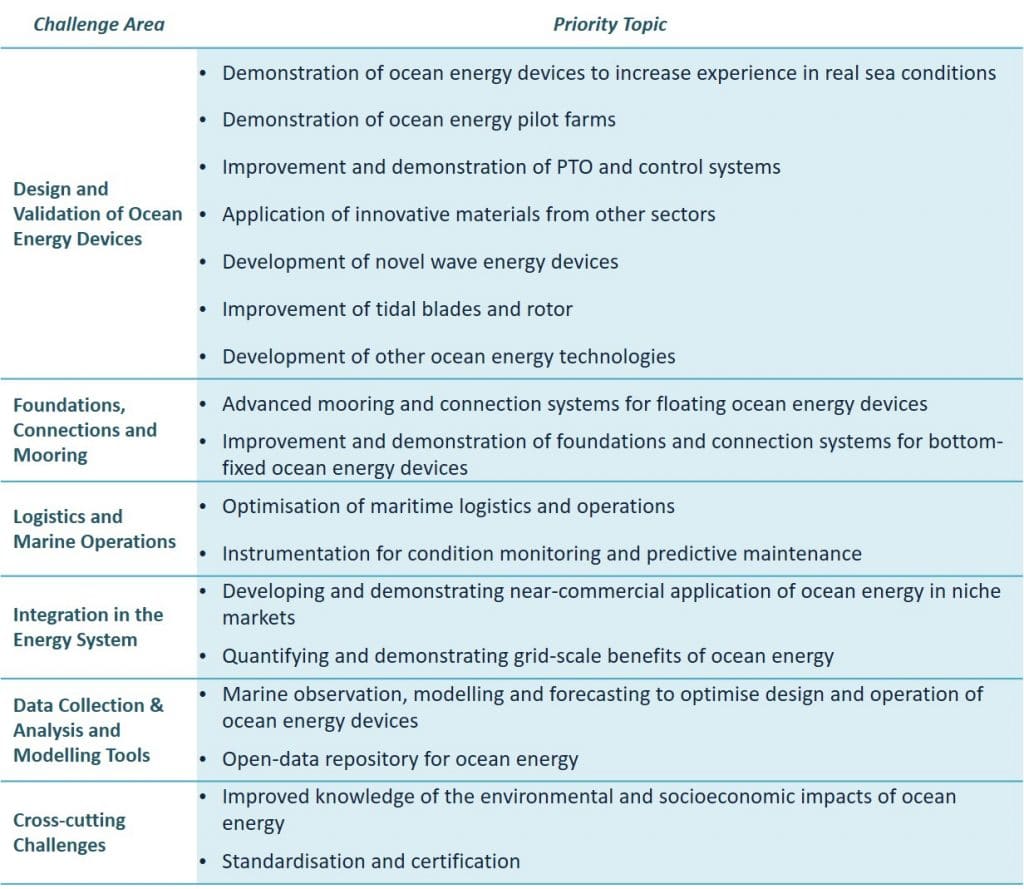
Each Priority Topic description can be used as a basis in future Research & Innovation calls from public funding organisations (EC, Member States and Regional Agencies). For each Priority Topic, the SRIA defines:
- Scope
- Applicability (wave, tidal, others)
- Actions
- Expected impact
- TRL (entry/exit)
- Budget Required (number and size of projects)
Examples of Priority Topics, applicability and TRL for the Challenge Area “Design and Validation of Ocean Energy Devices” are presented below:
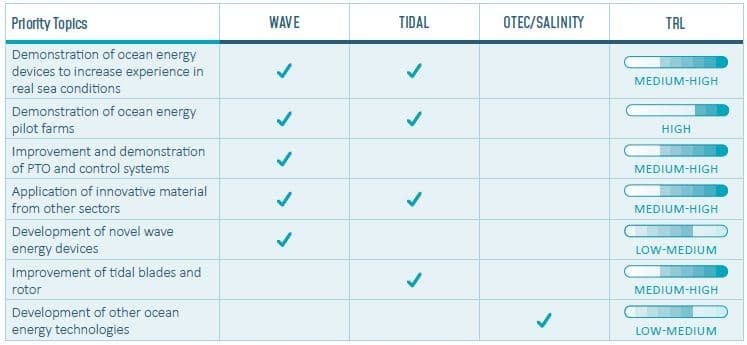
Priority Topics on Design and Validation of Ocean Energy Devices, Source: SRIA 2020, ETIP Ocean
Public funding will leverage private investment
The right EU and national level public funding at the right stages of development can attract and unlock significant volumes of private investments.
A total budget of €1bn is required to address all Priority Topics within each Challenge Area of the new SRIA by 2025. €671m of public funding (European funds and Member States) allocated to the identified innovation actions will leverage about €335m of private investment.
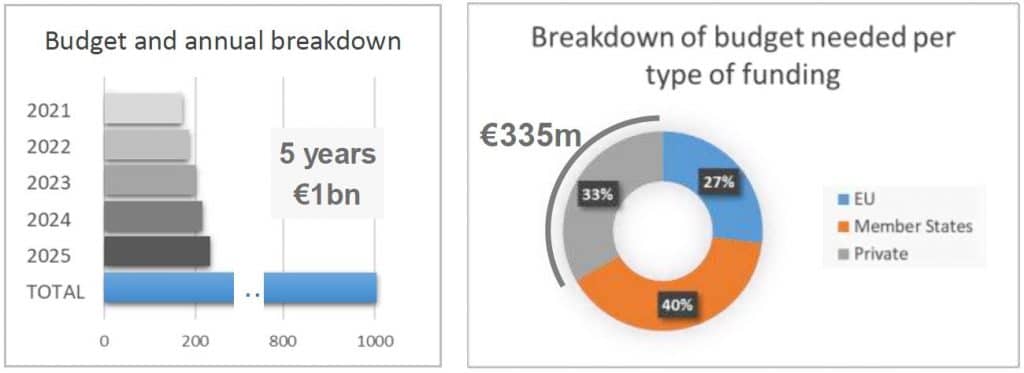
Suggested breakdown of budget needed per year and type of funding. Source: SRIA 2020, ETIP Ocean
The right type of funding at the right stage
To maximise private investment, the right type of R&I funding at the right stage is needed. Currently, there are several different funding schemes in place providing support from R&I to pre-commercial stages (see figure below). A variety of funding instruments, suited to ocean energy’s different stages of development, will still be needed in the next years.
Beyond grants for R&I and prototype deployments, different support mechanisms are needed to reach full industrialisation. Solutions for revenue support, financial instruments and environmental licensing & monitoring are necessary for demonstration projects to deploy multiple full-scale devices in real sea for extended periods of time.
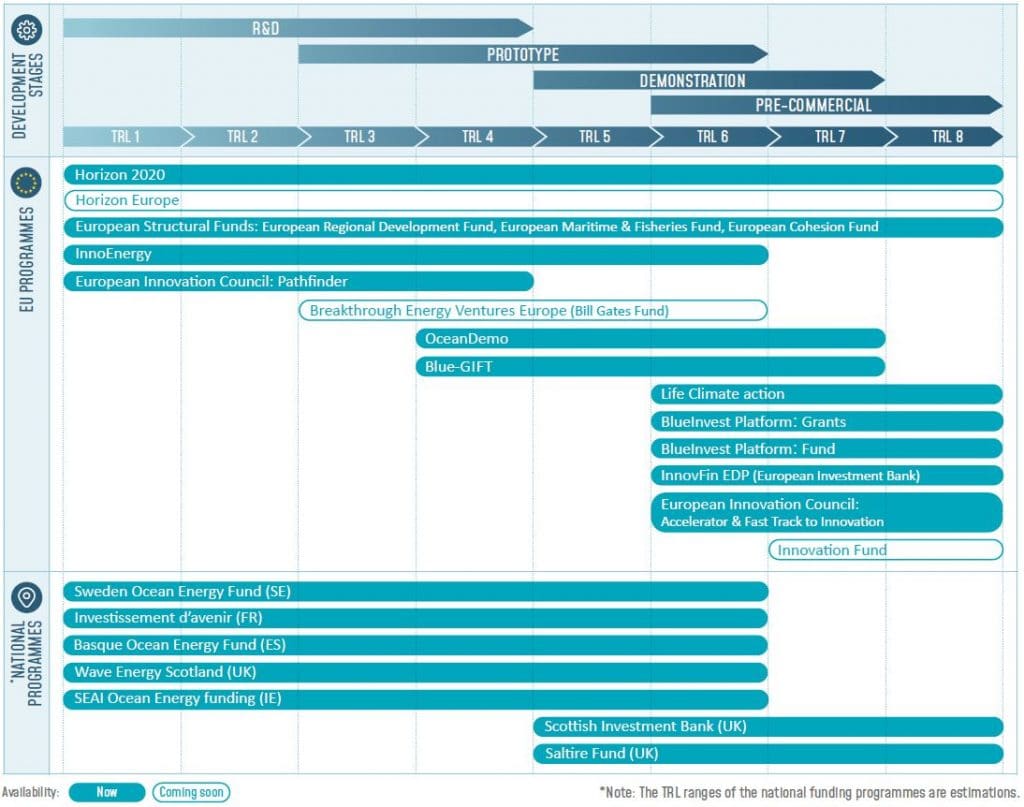
Examples of funding instruments at EU and national level. Source: SRIA 2020, ETIP Ocean

